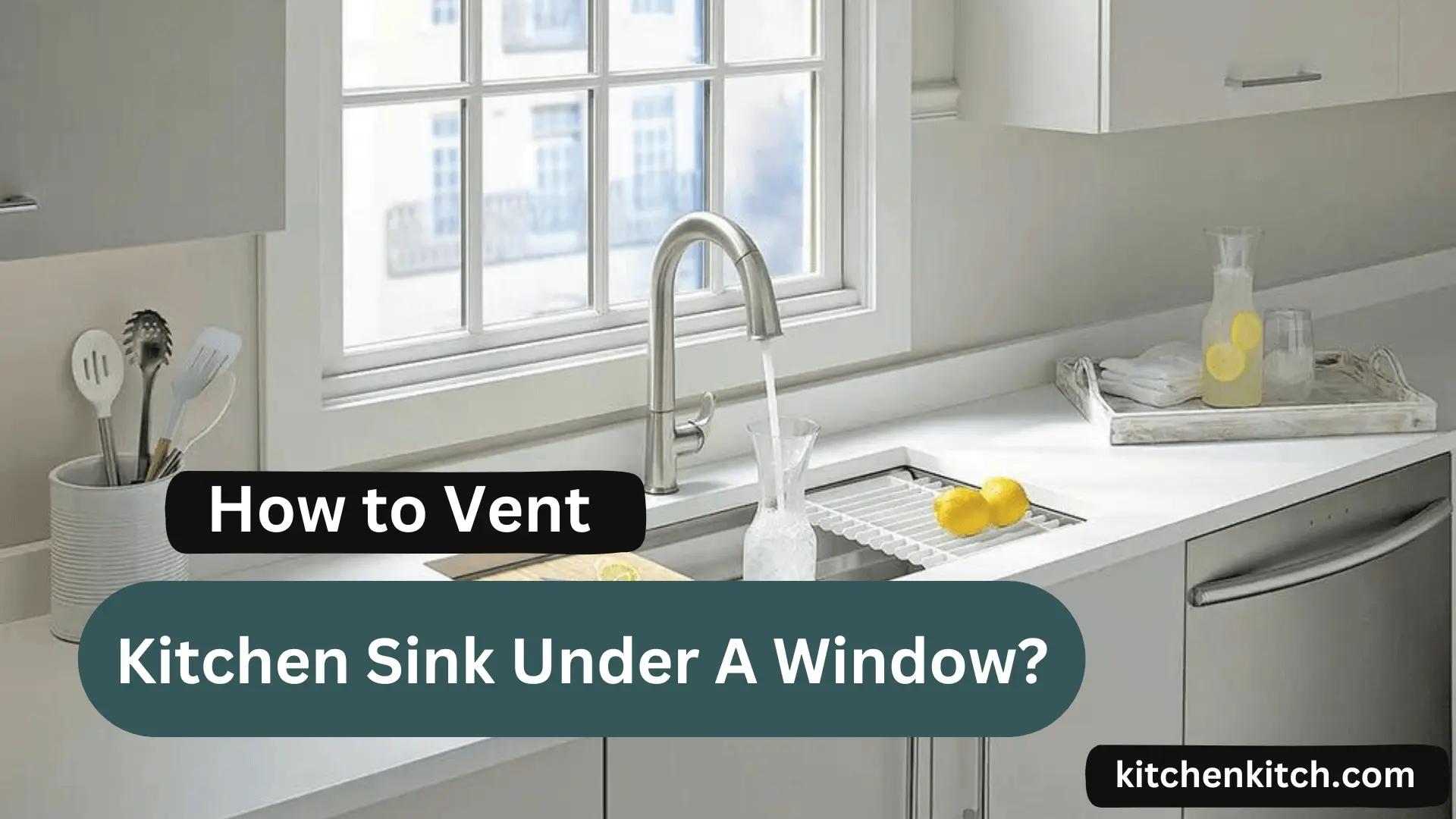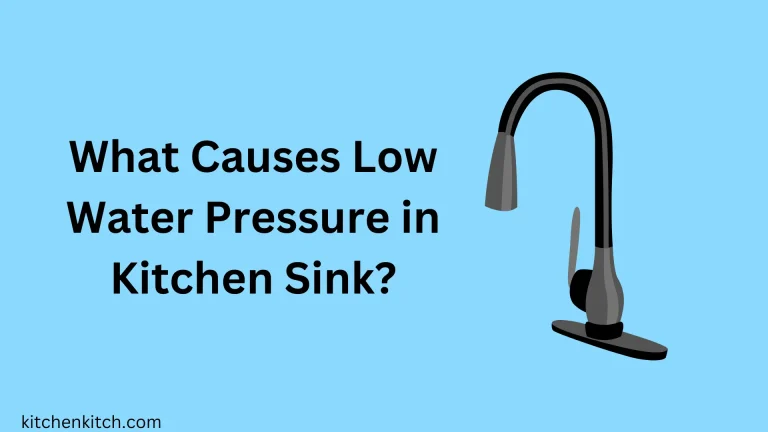How to Vent A Kitchen Sink Under A Window?
A good kitchen needs proper airflow to work well. Imagine cooking your favorite meals, but the sink won’t drain quickly, weird sounds bubble up, and bad smells stick around. That’s when a good sink ventilation system saves the day. It helps water flow smoothly, stops strange noises, and keeps your kitchen smelling nice.
But if your sink sits under a window, getting ventilation right can be tricky. With the right setup, your kitchen will feel just right, with everything working smoothly. So let me guide you on how to vent a kitchen sink under a window.
Does the Kitchen Sink Need to be Vented?
The question of whether a kitchen sink needs venting sparks debate among plumbers and homeowners alike. You might have always assumed that kitchen sinks should be vented without questioning it. Yet, some plumbers argue that venting isn’t necessary and suggest that keeping the sink non-vented is preferable due to its open nature.
In practical terms, a kitchen sink operates as an open system. Its outlet isn’t directly connected to the sewer, relying instead on ventilation through the nearby window. When the window is installed correctly, following building codes and safety standards for ventilation, everything should function smoothly.
However, some individuals advocate for keeping kitchen sinks vent-free, especially considering their proximity to food preparation areas. They argue that odors or airborne bacteria from sink waste could potentially contaminate food, particularly when water is involved. This viewpoint emphasizes the importance of maintaining a clean and hygienic kitchen environment.
Supplies for Venting a Kitchen Sink Under a Window
PVC Plumbing Vent Pipe:
The first item you’ll need is a vent pipe made from PVC plastic or PEX plastic. While PVC and PEX may not suit all plumbing needs, they’re ideal for air ventilation. Ensure the vent pipe is at least 1.5 inches in diameter to prevent clogs.
PVC Sanitary Tee:
A sanitary tee, also known as an elbow, connects your plumbing system to the ventilation system. It’s like a splitter, typically made of PVC plastic. For a standard kitchen sink, the tee will have two 2-inch openings and an additional 1.25-inch port.
PVC Cement:
PVC cement is a sealant that bonds PVC pipes together, preventing leaks. It uses chemicals to melt the surface of the materials, creating an airtight connection. Follow the instructions carefully to avoid any issues like chemical infiltration into drinking water or foul odors.
Hack Saw:
A hack saw is a type of saw designed for cutting PVC pipes. You can opt for a manual hack saw, which requires more effort, or use a powered one if available.
Power Drill:
You’ll need a power drill to drill into the kitchen wall and install the ventilation pipe at the appropriate locations. This tool facilitates the installation process and ensures accuracy.
You should also know how to fix the air fryer blowing cold air.
Step-by-Step Guide: How to Vent A Kitchen Sink Under A Window?
Step 1: Installing a Sanitary Tee:
Start by installing a sanitary tee under your sink. This tee allows two pipelines to merge into one. Ensure the surface where you’re working, like a cabinet or countertop, is level by using screws to secure it.
Step 2: Get Your Materials Ready:
Gather the necessary materials for venting your sink: a 3-inch diameter PVC 90-degree elbow joint, a PVC 4-inch diameter ell that fits your sink’s current pipes, and a 3-inch 90-degree pipe collar for mounting against the window sill.
Step 3: Begin Attaching Your Components:
Attach the ell to the side of your sink. Use a male threaded pipe for a secure fit. Then, screw the PVC elbow joint onto the other end of the ell.
Step 4: Attaching The Pipes To The New Joint:
Cut a 1½ inch diameter pipe, leaving about 8 inches attached to the sink. Connect this pipe to the bottom of the ell-to-sink joint using Teflon tape or epoxy putty. Extend the pipe out through a window and secure it against the house with brackets.
Step 5: Finishing Up:
Prevent vacuum creation in your system by adding a trap arm. Connect another ell to the newell and run a pipe straight down to the floor. Use elbow joints to connect it to your main waste line, ensuring air doesn’t return to the sink when the water supply is turned off.
Step 6: Bask in Your Accomplishment:
Take pride in successfully venting your kitchen sink under a window! Always prioritize safety by ensuring everything is dry before plumbing work. If in doubt, wait to avoid accidents due to wet surfaces.
How to Fix Kitchen Sink Vent Drainage?
When your plumbing drain system’s vents are blocked, it can lead to slow or no water flow.
Imagine covering the end of a full drinking straw with your finger – that’s what happens when the vents are entirely closed.
Remove Obstructions in the Drain:
Keep an eye out for slow-draining sinks. Check for any obstructions in the drain to pinpoint if it’s a vent issue, as slow drainage is often the first sign of vent blockage.
Listen for Signs:
Open a second drain and listen for gurgling noises from the first one. For instance, as you empty your sink, you might hear gurgling sounds coming from the drain.
Take Out the P-Trap:
If accessible, remove the P-trap from the fixture where you hear gurgling.
Use adjustable pliers or hand tools to unscrew the trap’s compression nuts.
Place a bucket underneath before removing it to catch any leaking water.
Use Water Pressure: Spray water into the main vent on the roof with a garden hose.
A clogged main vent can cause water to backflow into the system. If this happens, use a plumbing auger to clear the vent pipe.
Tips for Venting a Kitchen Sink Under a Window
If you’re venting a kitchen sink under a window, here are some useful tips to keep in mind:
- Maintain Distance: Ensure the drain pipe is at least 12 inches away from the foundation wall or window frame.
- Length Matters: Keep the drain line under 8 feet in length. Longer lines can lead to slow waste flow, causing potential issues with drainage.
- Install Vent Pipe: Install a vent pipe to allow air to travel back up the line. This helps maintain proper drainage and prevents unpleasant odors.
- Insulate Pipes: Use insulated piping to reduce plumbing fixture noise and prevent pipes from freezing in cold weather. This helps maintain a quiet environment and prevents potential damage due to freezing.
- Mind Electrical Wiring: Be cautious when running pipes near electrical wiring to avoid hazards. Keeping them separate reduces the risk of accidents caused by water mixing with electricity.
- Insulate Vent Pipe: Cover the vent pipe with insulation to minimize heat loss during colder months. This ensures efficient ventilation while conserving energy.
Safety Precautions for Venting a Kitchen Sink Under a Window
When venting a kitchen sink under a window, it’s crucial to prioritize safety. Here are some precautions to keep in mind:
- Energy Efficiency: Make sure the replacement window is as energy-efficient as the original one. This helps maintain insulation and saves energy.
- Professional Assistance: Venting a kitchen sink involves deep excavation and heavy equipment near windows and doors. To prevent serious injuries, it’s best to hire a professional for the job.
- Protective Gear: Always wear protective gear like steel-toed boots, goggles, and dust masks. This safeguards you from accidental injuries and prevents inhaling dust particles generated during the work.
- Read Disclaimers: Before starting the project, read any disclaimer forms carefully. They contain important warnings and safety guidelines for venting a kitchen sink under a window.
- Professional Expertise: Venting a kitchen sink under a window isn’t suitable for amateurs. It requires expertise and knowledge to ensure safety and proper installation.
- Clear Surroundings: Clear out any unnecessary items around the kitchen sink before venting. This provides easy access to the walls behind which plumbing lines are located, reducing the risk of accidents while working near them.
By following these precautions and working with professionals, you can ensure that venting your kitchen sink under a window is done safely and efficiently.
Conclusion
In conclusion, venting a kitchen sink under a window requires careful planning, precise measurements, and proper sealing to ensure efficient drainage and ventilation. While it may seem daunting, seeking professional guidance can help avoid common mistakes and ensure a successful installation. By following these steps and seeking assistance when needed, you can create a well-ventilated and functional kitchen space where everything flows smoothly.








